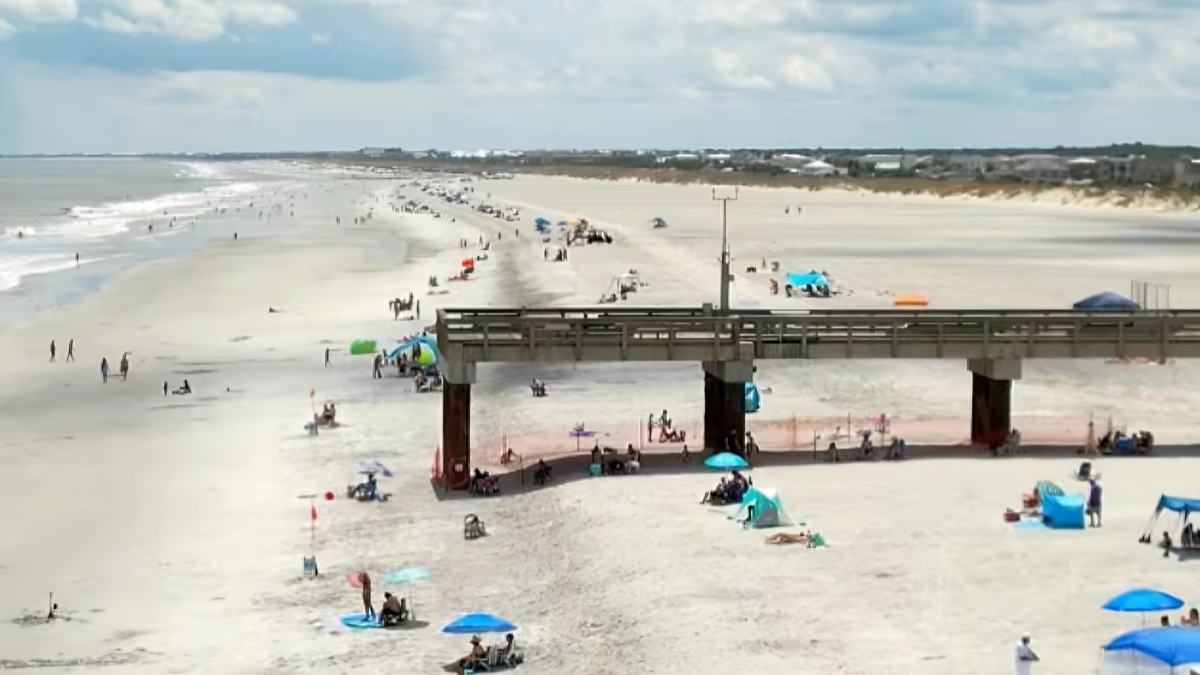
Located along the banks of Moncrief Creek, Norwood is a Northside neighborhood that was laid out in 1912. The neighborhood was largely developed around Norwood Avenue between the 1920s and 1950s, with many residents taking advantage of the Federal Housing Authority’s guaranteed mortgages. Here are a few historical facts about the development of Norwood.
An 1880s Yellow Fever epidemic site

Then located in the pine woods several miles north of the city, the Sand Hills Hospital was built as a pest house for smallpox cases during the early 1880s. On July 28, 1888, Tampa saloon keeper Richard McCormick became Jacksonville’s first confirmed case of Yellow Fever. Despite attempts to prevent an epidemic of the disease, 130 additional cases and 20 deaths had been reported by Aug. 29. Yellow Fever struck Jacksonville with so much force that The New York Times’ front page reported it was “every one for himself” in the city.
Facing the epidemic, Sand Hills Hospital was expanded with a 40-foot pavilion fitted with beds and several other buildings. Yellow Fever peaked in the last week of September, with 944 new cases reported and 70 deaths. When it was all said and done, of the estimated 14,000 people who did not flee the city, more than 4,700 ended up suffering from Yellow Jack, leaving 400 dead.
Many of those lost souls were buried in graves in the elevated pine woods near the hospital. This forgotten part of the city’s history eerily resurfaced in Norwood with the construction of Gateway Shopping Center.
Once home to Jacksonville’s largest shopping mall

Developed by Sam Morris Spevak, Norwood’s Gateway Town Center was one of Jacksonville’s early shopping centers to challenge Downtown as the city’s retail epicenter. Gateway opened in 1959 as an open-air strip shopping center.
Designed in the shape of an upside-down “L”, the north section of the center was anchored by JCPenney, W.T. Grant, and Winn-Dixie. The south section included G.C. Murphy, Food Fair, Lerner Shops, and Walgreens. To avoid the congestion associated with Downtown shopping, a 4,500-space surface parking lot was included to accommodate shoppers. An enclosed mall was added at Gateway in 1967, with JCPenney and Montgomery Ward, along with a Morrison’s Cafeteria, as its anchors.
The combined outdoor/indoor shopping center was over 650,000 square feet and had over 80 stores, making it the largest in the city at the time. Although Gateway declined during the 1980s and 1990s, the property has rebounded since being acquired by the current property owner in 2017.
One of Jacksonville’s oldest manufacturers

Once Florida’s largest industry, and one of the oldest industries in the U.S., turpentine is a ubiquitous ingredient in American household products including paints, medicines, hair spray, and cosmetics. The turpentine industry was a driving force behind the development of early Jacksonville. In 1910, lumber magnate Wellington Cummer opened the Standard Turpentine Co. on the outskirts of town to distill pine tree sap into turpentine. Eventually, the Norwood neighborhood grew up around the plant.
In 1936, it became a division of the Glidden Company. In 1957, Glidden was acquired by SCM Corporation. In 1986, Hanson PLC purchased SCM and renamed the Norwood plant SCM Glidco Organics. During the 1980s/1990s crackdown on odor emissions by Mayor Tommy Hazouri, investments were made in advanced technology to control the release of foul sulfuric odors in the manufacturing process.
The plant became Millennium Chemicals in 1996, after the Hanson PLC demerger. Millennium was then sold to Lyondell Chemicals in 2004. Three years later, Lyondell was acquired by Basell, forming LyondellBasell Industries. In 2010, Pinova Holdings acquired LyondellBasell Flavors & Fragrances, leading to the formation of Renessenz LLC. Renessenz was acquired by Symrise in 2016.
Now 114 years old, the plant is the longest continuously operating manufacturer in the city of Jacksonville. Employing 180 workers making over 20,000 tons of flavors and fragrances annually, Symrise produces aroma and fragrance materials from natural renewable feedstock, supporting about 30% of Symrise’s fragrance and flavor creations.
A Jacksonville culinary staple

Norwood is also home to a legendary culinary staple in Jacksonville’s food scene that has been serving hungry patrons for six decades. Located at 6512 Norwood Ave. and once featured on the TV show Diners, Drive-Ins and Dives, the Blue Boy Sandwich Shop is an authentic Jacksonville institution. Known for its large sandwiches on round or sub “loaves” bread that it bakes fresh daily, the restaurant was started by an Italian immigrant who went by the name Blue Boy around 1962. During the early days, the sandwich shop’s owner lived in the back of the restaurant. During the 1970s and 1980s, Blue Boy was a favorite dining destination for former Mayor Jake Godbold. Today, Blue Boy continues its tradition of making its own bread every day and offering up many varieties of sandwiches with a slogan: One sandwich, one meal!







